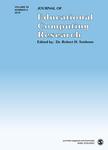版权所有:内蒙古大学图书馆 技术提供:维普资讯• 智图
内蒙古自治区呼和浩特市赛罕区大学西街235号 邮编: 010021

作者机构:Univ Santiago Chile Fac Management & Econ Av LB OHiggins 3363 Santiago Chile Univ Calif Santa Barbara Dept Psychol & Brain Sci Santa Barbara CA 93106 USA Univ Santiago Chile Interact Technol Lab Santiago Chile
出 版 物:《JOURNAL OF EDUCATIONAL COMPUTING RESEARCH》 (J. Educ. Comput. Res.)
年 卷 期:2021年第59卷第4期
页 面:713-739页
核心收录:
基 金:Chilean Agencia Nacional de Investigacion y Desarrollo through grant FONDECYT
主 题:drag-and-drop interface computer-based assessment online testing technology-enhances items multimedia test developer standardized test
摘 要:One of the most common technology-enhanced items used in large-scale K-12 testing programs is the drag-and-drop response interaction. The main research questions in this study are: (a) Does adding a drag-and-drop interface to an online test affect the accuracy of student performance? (b) Does adding a drag-and-drop interface to an online test affect the speed of student performance? In three different experiments involving fourth, sixth, and eighth graders, respectively;students answered reading comprehension questions presented in conventional (i.e., paper-based design) or drag-and-drop formats. The tests consisted of four-sentence ordering items in Experiment 1, four graphic organizer items in Experiment 2, and two cloze tests and two graphic organizer items in Experiment 3. The conventional and drag & drop groups were compared on test performance (i.e., accuracy) and efficiency (i.e., response time and number of mouse clicks). Across the three experiments, the conventional and drag & drop groups did not differ in mean performance, but the drag & drop group responded more efficiently than the conventional group (faster response time, d = 0.62, and fewer mouse clicks, d = 1.13).